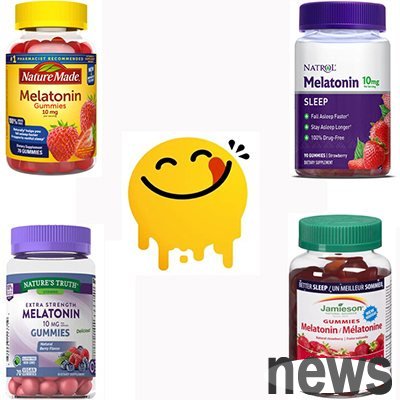
The American Medical Association journal JAMA published a medical news the day before yesterday (2022-7-27) Climbing Melatonin Use for Insomnia Raises Safety Concerns (the continuous increase in melatonin use, which causes safe depression to cause insomnia). The key points are as follows:

From 2007 to 2012, melatonin usage in children and adolescents between the ages of 4 and 17 increased by 7 times, and from 2012 to 2021, it increased by 5.3 times. That is to say, the use of melatonin increased by nearly 40 times during this 14-year period.
The US CDC released Pediatric Melatonin Ingestions &mdash on 2022-6-3; United States, 2012–2021 (Children melatonin input —— United States, 2012-2021), noting that the annual amount of melatonin input in children increased by 530% during the 2012-2021 period, while approximately 1.6% or 4555 intakes had serious consequences. Two children under the age of 2 died at home, and five required mechanical breathing. Of the 27,795 children who were treated in the medical institution, 4,097 were required to be hospitalized and 287 were sent to critical care rooms.
Melatonin usage in adults also continued to rise, increasing from 0.4% in the 1999-2000 cycle to 2.1% in the 2017-2018 cycle.
Melatonin sales more than doubled in just three years, from $339 million in 2017 to $821 million in 2020. It is expected that sales of melatonin will continue to grow due to greater sleep problems faced by aging population and increasingly busy lifestyles that may lead to anxiety and sleep disorders.
Melatonin can only be obtained through prescriptions in most countries, but in the United States, it can be purchased at will, and the ingredients and manufacturing of commercially available products are almost not subject to any supervision. Some studies have raised concerns about the quality control and content of these non-prescription drugs. For example, a study of non-prescription melatonin supplements sold in Ontario, Canada found that the content of melatonin will be nearly five times higher than the ones shown on the label and may vary greatly between batches. Eight of the 31 products tested contain serotonin, a melatonin-breaking product with potential health risks. The
data also showed that more adults used doses of more than 5 mg, which allowed serum melatonin levels to exceed typical night peak concentrations. Before the 2005-2006 NHANES survey, no participants reported taking more than 5 mg per day, but by 2018, about one in eight melatonin users did so. The melatonin released by our brain pineal gland is measured on picogram (1 picogram is equivalent to one million part milligram), and the dosage (about half a milligram) used to treat night disorders is also far lower than the dosage of many commercially available products. (The products in the illustration are all 10 mg)
melatonin supplements are usually safe, but not at all without risk. Adverse reactions include headache, fatigue, headache, vomiting, and daytime sleepiness. The small study also recorded potentially more severe consequences, including reduced glucose tolerance and increased blood pressure and heart rate in patients taking melatonin and antihypertensive drugs at the same time.
We know very little about the long-term safety of melatonin. For example, a recent analysis concludes that the impact of melatonin on adolescence needs to be evaluated based on how melatonin affects other hormones and animal sexual behaviors.
Harvard University neurology professor Judith Owen said that he hopes the CDC report will prompt clinical doctors and parents to stop taking melatonin to their children. Many products are sold in fruit flavors or as soft sugar or chewable tablets and lack children's protective packaging. She noted that parents call melatonin "candy" or "vitamin" to take their children, which may be passing on misinformation.
She added: "Like any sleep aid, melatonin is at best a harbor, and it cannot solve the fundamental problem, and these problems are usually behavioral problems."
Note: I published the melatonin miracle method four years ago, criticizing a book published in Taiwan to encourage everyone to take melatonin. The illustrations of this article today also show that health care products companies only focus on picture profits and produce fruit-flavored melatonin products like candy (and super high doses) in order to attract public consumption.
Original text: The use of melatonin